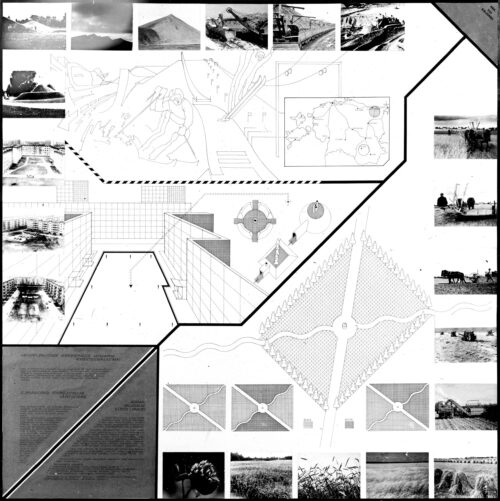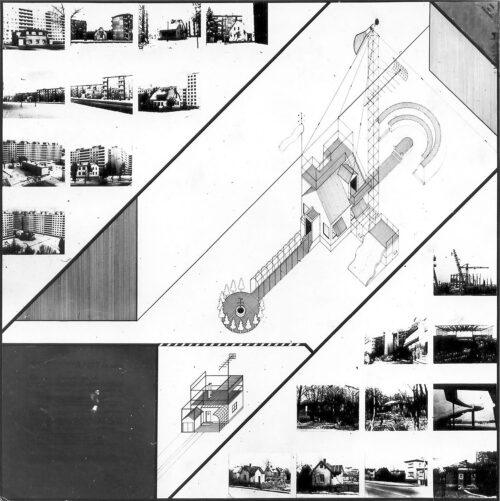‘New Visual Environment’, 1976
The work of Estonian architect Tiit Kaljundi (1947–2002) frequently addressed the challenges of urbanisation and the post-industrial environment, including the decline of small towns and rural settlements. Kaljundi sought to revitalise these communities through the introduction of temporary entertainment centres, which he believed could act as a catalyst for regeneration. This approach aligns with the ideas proposed by Archigram.
The 1976 work, entitled ‘New Visual Environment I’, addresses the potential regeneration of an abandoned industrial environment. It proposes the transformation of an abandoned coal mine in eastern Estonia, specifically its spoil tip, into a mountain ski resort. Notably, Estonia lacks natural mountains. In a proposal to enhance the monotonous environment of post-war housing estates, he envisioned the planting of crop fields in the courtyards of prefabricated residential blocks. This would offer the alienated urban dweller a natural experience. Kaljundi’s projects exhibit a synthesis of tradition and innovation.

